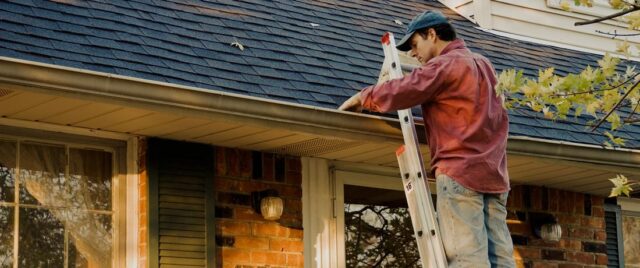
Depending on where you live in the country, storms, hurricanes, floods, and other natural disasters can play havoc on our homes.
No matter how long you’ve lived in your property, taking precautionary action will help minimize the amount of damage caused by a severe weather event.
This will reduce the amount of time, effort, and investment you have to put in to get your home back to normal after any severe weather event. Your home is a sanctuary, and you must work hard to keep it that way.
If you aren’t sure where to begin, here are 9 handy tips that can add an extra layer of protection to your home, helping to keep you, your family, and your belongings safe.
1. Review Your Insurance Policies

Before you begin making any changes, you must start by looking over your insurance policies. Doing so will make sure that you are covered for any losses incurred from a severe weather event such as a brutal storm. The destruction caused by natural disasters like an earthquake or hurricane tends not to be covered by your regular homeowner’s policy.
However, you do have the option to buy it separately. Make sure to create a checklist of your belongings to hand to your insurance company. Also, any documentation should be stored in a safe location away from your property.
2. Seal Doors and Windows
If a severe weather event is on the horizon, your first port of call should be to seal your doors and windows. Trying your hardest to stop water and heavy wind from entering through your windows and entry doors will help minimize damage. The last thing you want is for heavy rain to destroy the inside of your home, especially if you live in a hurricane-prone area, so you must seal your doors and windows as tightly as possible. There are unique storm shutters you can purchase and install that act as an extra line of defense for your windows.
3. DIY Storm Shutters

If you would prefer to go down the DIY route, you can make your own set of shutters out of metal storm panels or marine plywood. To make sure they do the job correctly, marking them so you know which window they are to be placed on is essential.
It’s essential that you don’t forget about your skylight windows wither. Once you have made storm shutters, they can be stored and used when needed.
4. Consider Steel Doors
Once you have purchased or made shutters for your windows, the next step is to focus on your doors. If you live in a region that is known for heavy storms, you may want to consider buying and installing steel entry doors. Heavy winds can easily rip through double doors that offer no structural support.
5. Remember Your Roof

Once you’ve focused on your windows and doors, it’s just as important to take your roof into account. If your roof is in good condition, it can act as a shield for your property’s interior from severe weather events outside. Whether you’ve recently moved into a new home, or you have any concerns about your existing roof, Semper Solaris may be able to help.
They provide roofing repair services and roofing replacements in the San Diego area to help keep your home protected. Semper Solaris also offers solar power battery storage, which can be used should you experience a power outage as a result of severe weather.
6. Clear Your Back Yard
Once you’ve taken care of the interior of your home, you must take good care of what’s on the outside. Any loose objects in your back yard could cause severe damage to your property in the event of severe weather. There are numerous strategies that you can take to prevent this, such as by clearing your back yard, removing all dead and dying tree limbs, as well as securing flowerpots, lawn furniture, and trashcans.
Also, make sure that you remove your exterior television antennas on your roof as they can take a severe beating in a storm.
7. Clean Your Gutters

There are several reasons why it’s essential to clean your gutters before a severe weather event occurs. Leaves and other debris can clog up your gutters in a storm to the point that water is flooding over, causing damage to your roof. This dirty water could leak into your home and cause damage to not only possessions but also your health and that of those you love.
Cleaning your gutters can also keep out pests and minimize the risk of cracks to your roof’s foundation, meaning there’s every reason to make sure your gutters are clean both before a severe weather event and in general.
8. Dismantle Temporary Outdoor Structures
Small outbuildings, such as sheds, summer houses, and even dog kennels, can be severely damaged by storms. As such, where possible, you should dismantle them and store them away. If you’re unable to do this, then protect them in some ways that you protect your main property.
Large pieces of outdoor equipment, such as swings, climbing frames, and trampolines, also need to be dismantled and stored safely away. If they’re left in the open, then they could blow away in the storm, or even cause severe damage to your property by hitting it.
9. Prepare for Shelter

When a severe weather event comes into town, you must prepare to shelter in a safe place. Keeping a stockpile of anything that you may need will mean you have the bare essentials to get by. Various items will come in handy during severe weather, such as an operated weather radio, and a flashlight. Your emergency stockpile may also include canned foods, fresh batteries, and non-perishable items.
No matter where you live in the country, it’s essential to be on your guard at all times to help ensure your home is safe and protected from severe weather.







